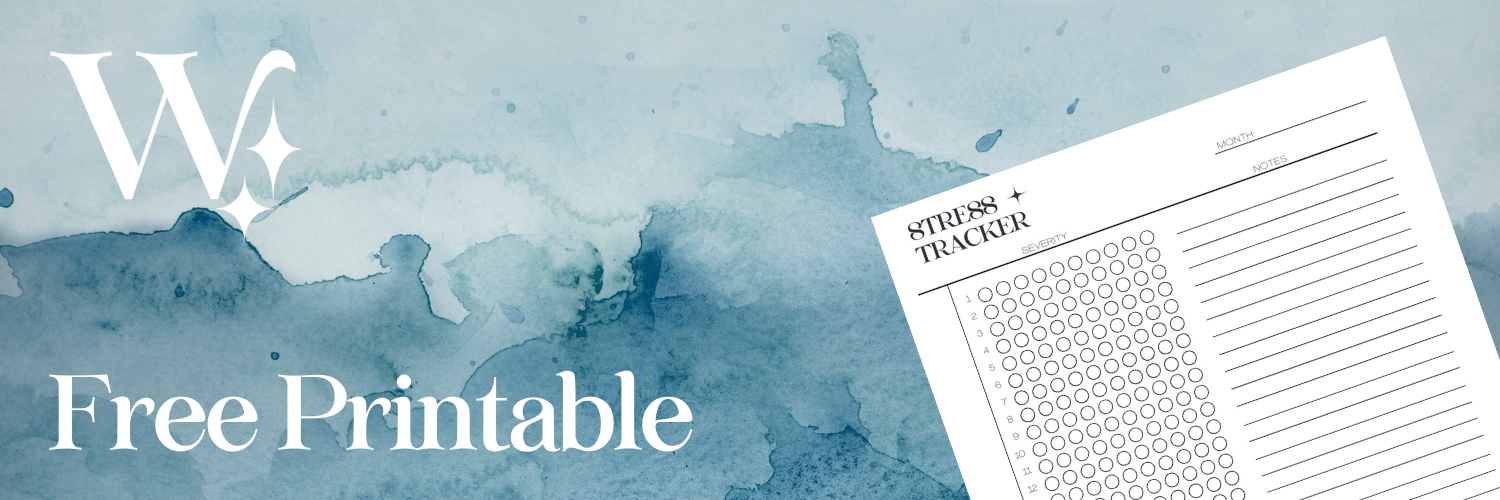From Stress to Strength: Embracing Self-Care in February
January was a whirlwind of stress for me; work rung in the new year with a wave of challenges that took a toll on both my mental and physical health. As February rolls in, the familiar weight of work stress lingers, and last week, I experienced my first major flare-up in over six months. That served as a wake-up call to me that change is needed. I recognize the necessity for a work-life balance, but it’s easy to let the balance get out of whack when you work for a start-up. So it’s time for a mental reset and to start leaning heavily on my routine and return to activities I love, Morning journaling, daily walks, and weekend hikes - these are things that bring me comfort and joy….and these are all things I’ve neglected since returning from vacation. In an effort to keep myself honest, I've started using a mood tracker to monitor stress levels and shifts. I’m trying really hard not to let my brain focus on the fact that this habit didn’t start on Jan….or even on the first of the month. Nope, I started mine on Feb 8th. And you can as well! There is no rule that you have to start on a specific date. These trackers, designed for personal use, are now available as a free download to support others navigating through stressful times. You can find the link at the bottom of this post.
January's Rollercoaster Ride
When Work Stress Takes Over
Work can be a driving force in our lives, but the pressure becomes unmanageable when the scales tip too far. The weight of deadlines, meetings, and ever-growing to-do lists in January was relentless for me. I found myself constantly connected, replying to emails late into the night and even pulling a couple of all-nighters. The boundary between my professional and personal life blurred, and the stress began to seep into every hour of my day. It was a cycle that I've seen many fall into, and this time, I was the one caught in the spin. The consequence was a feeling of persistent exhaustion that no amount of coffee or quick breaks could resolve. It became clear that without intervention, this pace was unsustainable and potentially harmful to my long-term health.
The Physical Manifestation of Stress
The signs of stress are not always visible, but they are certainly felt. As January's pace quickened, so did the emergence of headaches, muscle tension, and a general sense of fatigue that no amount of sleep seemed to fix. My immune system flagged, and my allergies worsened, a clear signal that my body was under duress. Then, a flare knocked me down and kept me in bed for 2 days. It was a stark reminder that mental and physical health are deeply interconnected. Ignoring the psychological strain of stress inevitably leads to physical repercussions. Acknowledging these symptoms was the first step towards addressing the root cause. It became evident that my body was sounding an alarm, and it was time to listen and make a concerted effort to reduce the stress that had become an unwelcome companion in my daily life.
Awakening from the Burnout
The Intolerable Flare-Up: A Turning Point
Last week's flare-up was a red flag that I couldn't ignore. The culmination of prolonged stress manifested in a way that made it impossible to continue at the same pace. My usual resilience wavered as I encountered a level of discomfort that disrupted not just my work but my life as a whole. In this moment of vulnerability, I realized the necessity of taking immediate action. The flare-up served as a critical turning point, a clear message from my body that the way I was working and living was not sustainable. It was time to pause, reassess, and recalibrate. This incident propelled me into action, sparking a commitment to prioritize my well-being and seek out strategies to allow me to regain control and move forward healthier.
Striving for Balance between Work and Life
The path to restoring balance between my work and personal life began with setting clear boundaries. I started by delineating work hours and sticking to them, which meant shutting down my computer at a reasonable time and silencing notifications after hours. This simple act of reclaiming my time helped create a buffer between the professional and personal, allowing me to decompress and engage in activities that brought joy and relaxation. I reintroduced hobbies that I had neglected, such as reading and painting, and made a point of spending quality time with family and friends. These steps might seem small, but they profoundly impacted my ability to manage stress. By consciously making space for life outside of work, I found that my health improved and my productivity and focus during work hours enhanced. Balance, I learned, is not just desirable; it's essential.
Crafting Calm: Mood Trackers
The Benefits of Monitoring Our Moods
Keeping an eye on our emotional landscape through mood tracking can be incredibly enlightening. By recording daily emotions, we can identify patterns and triggers that contribute to stress. This practice encourages self-awareness, allowing us to pinpoint the specific times of day or situations that are most challenging. With this information, we can develop personalized strategies to cope with stress more effectively. Moreover, mood tracking can serve as a tool for reflection, making it easier to recognize progress over time. It helps us to celebrate the small victories, like handling a stressful situation with greater ease than before. Additionally, tracking our mood can improve communication with health professionals, giving them concrete data to work with. Ultimately, mood tracking fosters a sense of control over our emotional well-being, empowering us to make changes that support a healthier, happier life.
Free Mood Tracking Download
To help you on your journey to better manage stress and enhance your well-being, I'm excited to share my mood trackers with you – for free. These trackers are designed to be easy to use, with a straightforward layout that makes it a breeze to record your daily emotions and activities. They are available in both US Letter Size and Classic Happy Planner size, making it convenient for many users. Using them is a simple yet powerful step towards understanding your mood patterns and taking control of your emotional health. Plus, they're customizable, so you can tailor them to fit your lifestyle and preferences. Whether you're tech-savvy, prefer digital tracking, or love the tactile feeling of pen on paper, a version is right for you. Use these mood trackers to navigate your emotional world more clearly and embark on a path to a calmer, more centered you.


